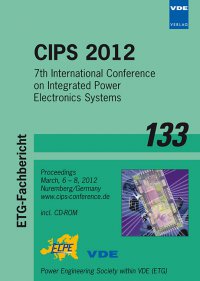Influence of Bonding Parameters on the Reliability of Heavy Wire Bonds on Power Semiconductors
Konferenz: CIPS 2012 - 7th International Conference on Integrated Power Electronics Systems
06.03.2012 - 08.03.2012 in Nuremberg, Germany
Tagungsband: CIPS 2012
Seiten: 6Sprache: EnglischTyp: PDF
Persönliche VDE-Mitglieder erhalten auf diesen Artikel 10% Rabatt
Autoren:
Goehre, Jens; Schneider-Ramelow, Martin (Fraunhofer IZM, Berlin, Germany)
Geißler, Ute; Lang, Klaus-Dieter (Berlin University of Technology, Berlin, Germany)
Inhalt:
In order to investigate the effect of the bonding parameters on the reliability of Al heavy wire bonds, samples were bonded with three different ultrasonic power levels and three different bonding force levels. The samples were exposed to active power cycling with a temperature swing of 120K (measured at the chip center). Each wire bond’s individual temperature swing was determined by IR thermography. The samples were destructively tested by shear testing at regular intervals to measure the mechanical strength of the bonds. Shear force and the area of the shear residues were evaluated. The results show that ultrasonic power has a major influence on reliability, whereas bonding force has a minor influence. The lifetime of bonds using high ultrasonic power was 1.5-3-times greater than those from low ultrasonic power. Microstructural analyses of the unbonded wire and bonds before and after active power cycling using a special FIB-channeling technique showed that ultrasonic power influences both the microstructure after temperature cycling and the crack propagation path, thus explaining the differences in degradation rates.


